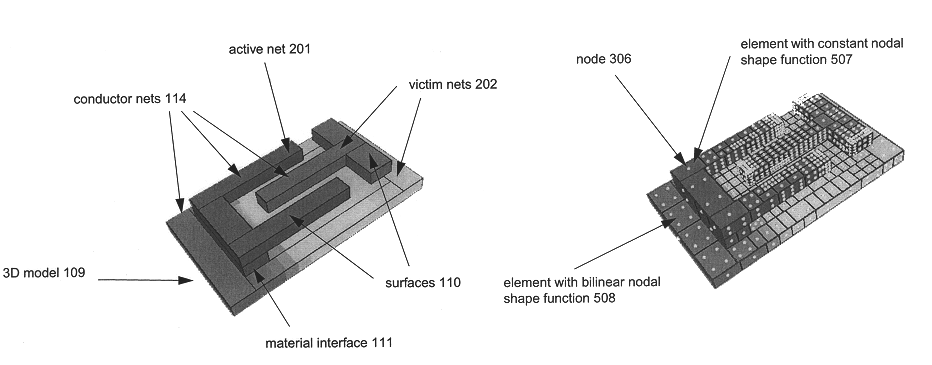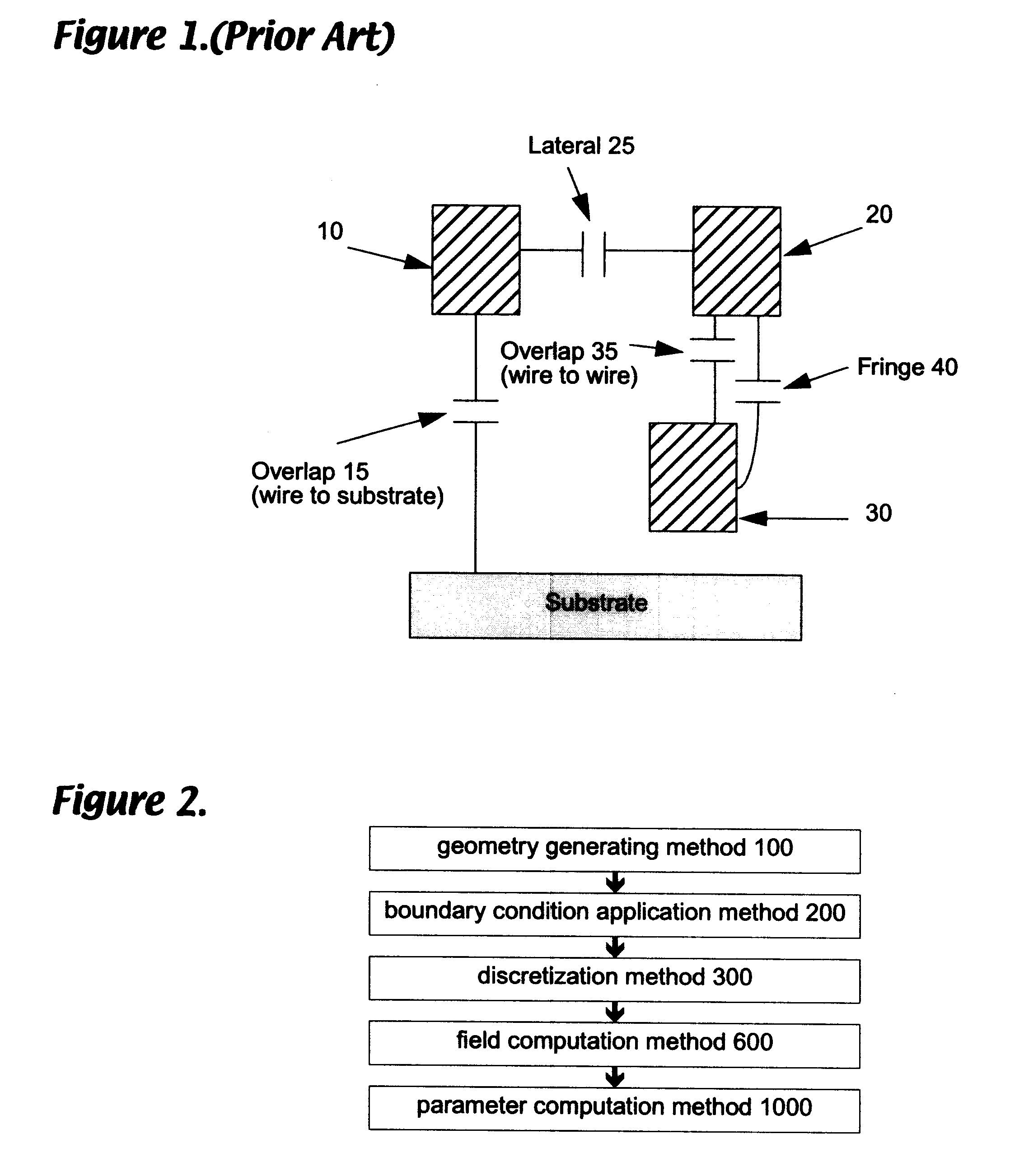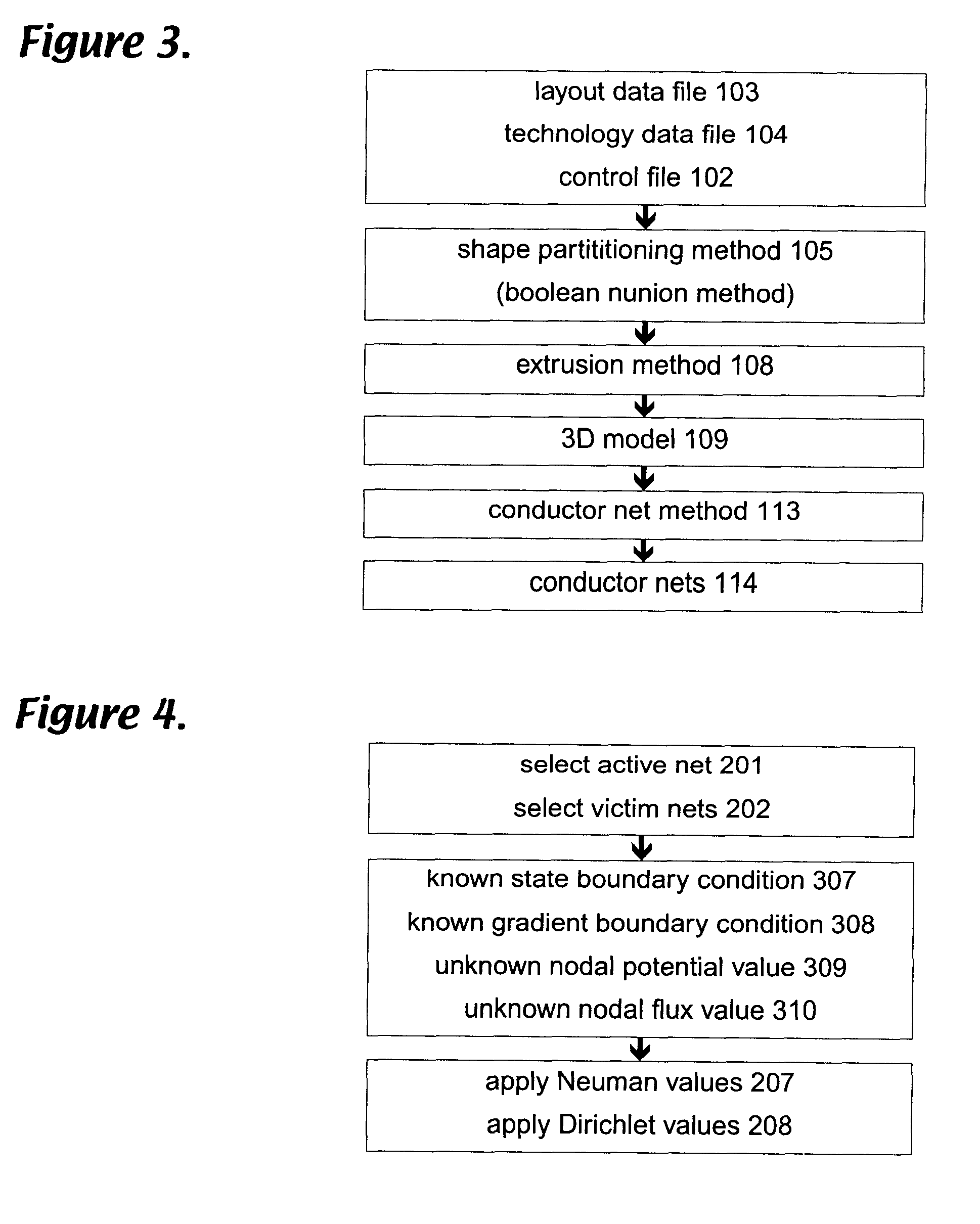Method and apparatus for three dimensional interconnect analysis
a three-dimensional interconnect and analysis method technology, applied in the field of three-dimensional interconnect analysis, can solve the problems of increasing the dominance of the rc delay in the on-chip signal delay, exceedingly small switching time of transistors, and increasing the performance of the on-chip circui
- Summary
- Abstract
- Description
- Claims
- Application Information
AI Technical Summary
Problems solved by technology
Method used
Image
Examples
Embodiment Construction
The preferred embodiment of the present invention will be discussed with reference to the accompanying drawings. In the following description, numerous specific details are set forth in order to provide a thorough understanding of the present invention. It will be obvious, however, to those skilled in the art that the present invention may be practiced without these specific details. In other instances, well-known structures are not shown in detail in order to avoid unnecessarily obscuring the present invention.
FIG. 2 is a block diagram showing a construction of the interconnect analysis method according to the present invention. First a geometry generating method 100 reads an input circuit description and creates a 3D model 109 (shown in FIGS. 3, 12). A conductor net method is thus applied to the model to identify a plurality of electrically connected conductor nets 114 (also shown in FIGS. 3, 12). Next a boundary condition application method 200 applies appropriate Neuman and Diri...
PUM
 Login to View More
Login to View More Abstract
Description
Claims
Application Information
 Login to View More
Login to View More - R&D
- Intellectual Property
- Life Sciences
- Materials
- Tech Scout
- Unparalleled Data Quality
- Higher Quality Content
- 60% Fewer Hallucinations
Browse by: Latest US Patents, China's latest patents, Technical Efficacy Thesaurus, Application Domain, Technology Topic, Popular Technical Reports.
© 2025 PatSnap. All rights reserved.Legal|Privacy policy|Modern Slavery Act Transparency Statement|Sitemap|About US| Contact US: help@patsnap.com



